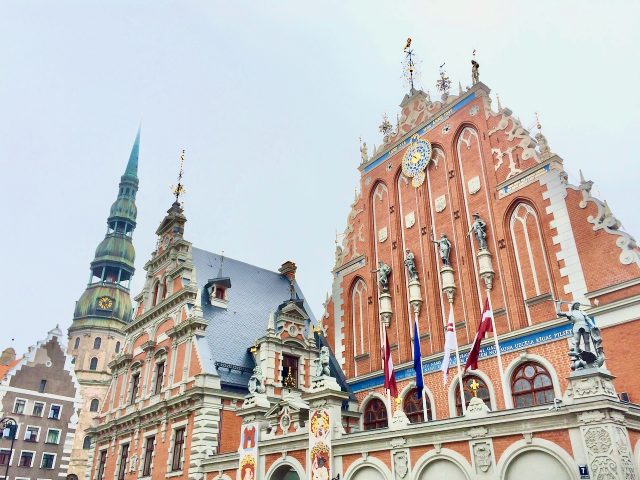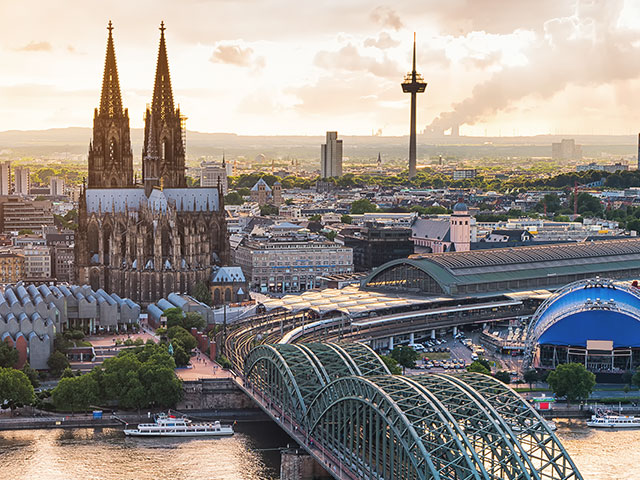 Kuldīga (Goldingen in German) is
a 12,981 inhabitants Latvian city on the banks of Venta river, and a very unknown touristic treasure, considered the pearl of Kurzeme. The town used to be the capital city of the Duchy of Courland and Semigallia but after the Great Northern War was almost fully destroyed and never recovered the previous situation of prosperity. Here was born Max Weinreich, a Jewish linguist specialised in Yiddish.
Kuldīga (Goldingen in German) is
a 12,981 inhabitants Latvian city on the banks of Venta river, and a very unknown touristic treasure, considered the pearl of Kurzeme. The town used to be the capital city of the Duchy of Courland and Semigallia but after the Great Northern War was almost fully destroyed and never recovered the previous situation of prosperity. Here was born Max Weinreich, a Jewish linguist specialised in Yiddish.How do I arrive to Kuldīga?
- Bus: there are buses each 2 hours to Riga (aprox. 3 hours) from Kuldīga Bus Station for 6.40€ (one way). There are also 7 daily buses to Liepāja (aprox. 2 hours), 7 daily buses to Ventspils (aprox. 1 hour 15 minutes) and also 7 daily buses to Alsunga (aprox. 40 minutes).
- Car: in case of having a car Kuldīga can be reached from Alsunga (aprox. 25 minutes), Sabile (aprox. 40 minutes), Ventspils (aprox. 45 minutes), Kandava (aprox. 55 minutes), from Liepāja (aprox. 1 hour 10 minutes), from Jūrmala (aprox. 1.5 hours), from Jelgava (aprox. 1 hour 45 minutes) and from Riga (aprox. 2 hours).
History
What can I visit in Kuldīga?
- Kuldīga Castle Park: park place where there used to be a 13th century castle destroyed during the Great Northern War, keeping some visible remains of it. Near there's the Castle Guard's House, 18th century building where used to live a guard protecting the remaining ruins of Kuldīga castle. This house suffered a smear campaign, being accused of having hosted assainations and beheadings
- Kuldīga District Museum (10-18 Wed-Sun; 12-18 Tue; free): local museum which is said to be placed in the Russian Pavilion in 1900 Paris exposition. In the 2nd floor there's a typical Kuldīga rich family house from the beginning of the 20th century, with a collection of deck of cards.
- Venta Rapid: the widest waterfall in Europe (240 m) is located in Kuldīga, even though they aren't high. It has one of the longest brick bridges in the continent and the most appealing thing is observing vimba breams flying the waterfall, in order to reproduce. In summer it's possible to swim here and there's a nice river beach in Mārtiņsala park. There are also Alekšupīte Waterfall, highest waterfall in Latvia (4.5 m) in Alekšupīte estuary
- St. Katrīnas Lutheran Church: church, first built in the 12th century, was built as it is nowadays during Duke Jacob times, in the mid 17th century. This is because it was where he was baptised.
- Duke's Pharmacy: 17th century German style building which used to be a pharmacy.
- St. Trīsvienības Catholic Church: 17th century Catholic church whose construction was ordered by Jacob Kettler and which owns many treasures of sacred art.
- Former Synagogue of Kuldīga: synagogue from 1875 that was transformed after Holocaust, first in a cinema and then in the main library in Kuldīga and a local art center.
- Svētās Dievmātes Patvēruma Russian Orthodox Church: 1871 church with a very small parish (it's rarely open) but whose frescos and its gate are nice to be seen.
- Going 2.5 km north by the river Venta can be seen the place where there used to be an important mound hill from the Couronian leader Lamekins and whose castle was said to be so beautiful that when the Germans arrived, they were reluctant to sack it.
- Just 5 km from Kuldīga there are the Sand Caves of Riežupe (11-17 from May to Oct; tour for 6€), caves built by a family for generations used to manufacture glass.
| Venta Rapid |
 |
| Kuldīga Old Town |
 |
| Abava Valley |
 |
| Kandava Lutheran Church |








 20:35
20:35
 Banknotemaniac
Banknotemaniac
 Posted in:
Posted in: